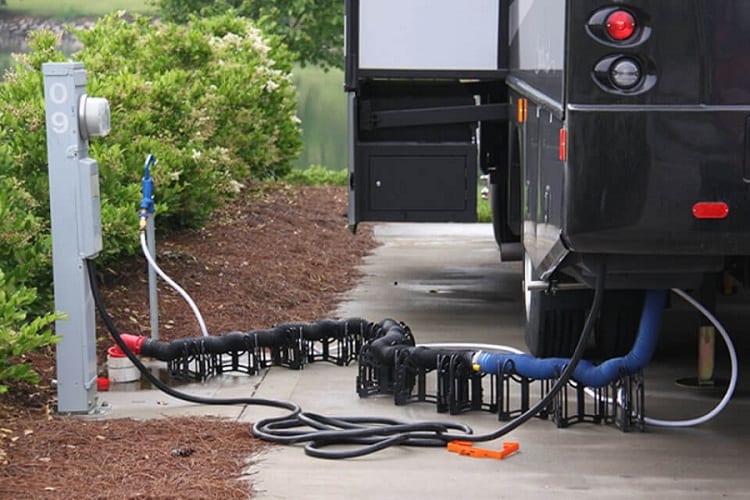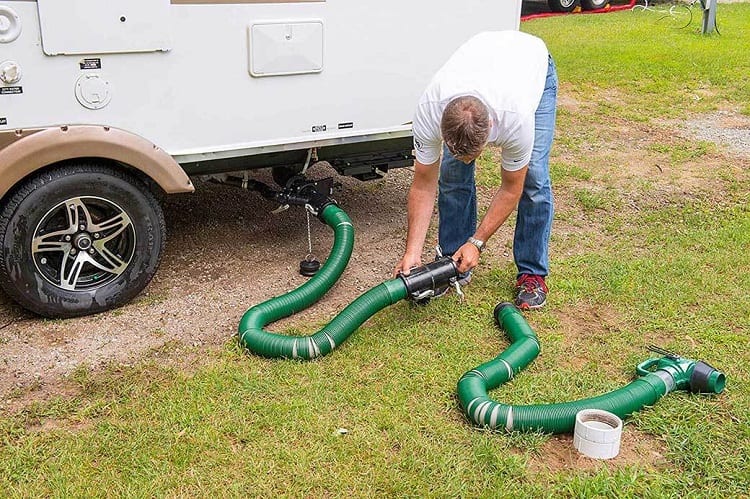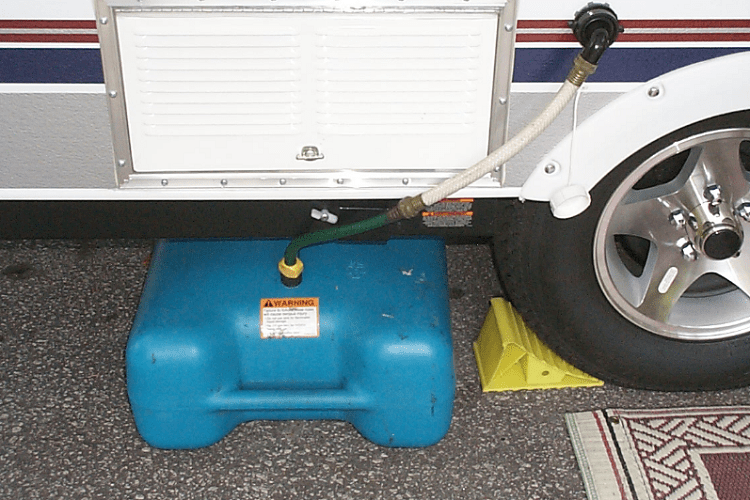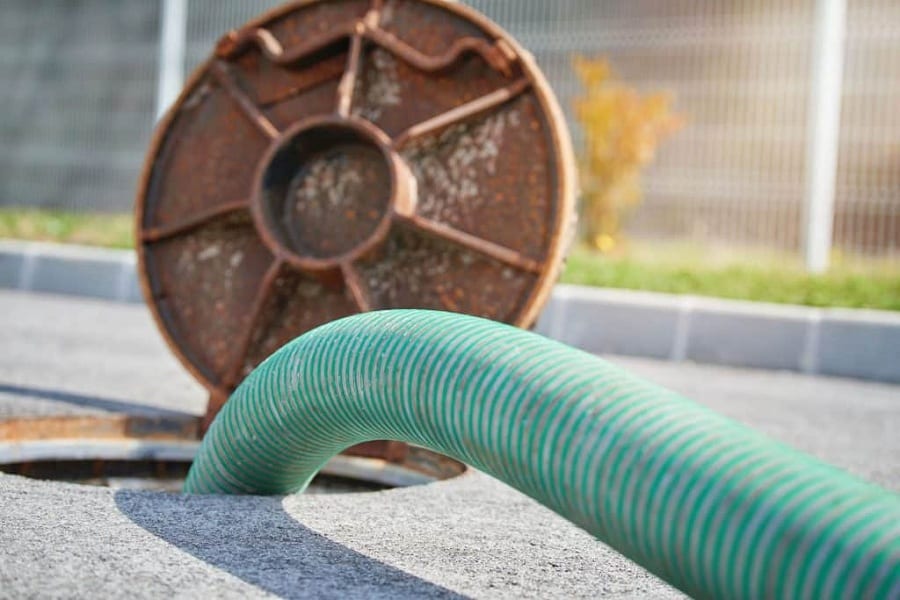Finding a sweet spot with the right hook-ups is like striking gold for an RV owner, and whether you’re parked up at home or visiting friends and family, there are ways you can do just that with your sewer needs.
Having a sewer hook-up for your RV is hugely beneficial and can be done from home just as you would at a campground, provided you do it right.
How do you hook up your RV sewer at home? To connect your RV to the sewer system of your home, you’ll need to first establish whether it’s legal, and then decide what option is best.
The easiest method is to connect to the public sewer system your home uses but other options include installing an in-ground septic tank, using a composting toilet, or dumping it from a black water tank.
To make the most of the hook-ups at home, we’re going to show you the best ways to get this vital connection going.
Whether you choose to use the public sewer system that’s readily available or take another route, you’ll be able to easily and cleanly get rid of the waste from your RV without a fuss.
Contents
The Best Options for Sewer Hook Ups at Home

Hooking up your RV to your house is surprisingly easy and there’s more than one way to do it.
If you’ve been thinking about camping at a friend’s house or staying in your RV on a temporary basis at home, these are some of the options for sorting your sewer connection.
Public sewer system
If your home is connected to the public sewer system, as most are, you can connect your RV there as well. For homes that have this connection, you might easily be able to find and use the cleanout pipe.
This is a pipe fitted with a cap that gives you access to the lateral sewer line which connects to the public sewer system and is usually used to clear blockages.
Composting toilet
When you don’t need a physical connection to your home’s sewer system, you can make bathroom breaks easy with a composting toilet.
These toilets collect the bathroom matter in a compartment that separates liquid and solid waste, and you can even use the resulting compost in some parts of the garden if you choose.
Septic tank
For people who plan on using their RV often at home, you can build a septic tank that’s stored in the ground and out of sight.
While this does help store the waste, it’s an expensive option and will still need to be professionally emptied now and then. This should only be considered if you’ve weighed up all the pros and cons.
Black water tank
The most common method for an RV’s sewer system is to have a black water tank installed that keeps the waste until it can be emptied.
This is made easier at home because you can then empty it at home using several different methods.
How to Hook Up RV Sewer at Home

If you’re going the easy route and connecting your RV’s sewer hose to the public sewer system that your house uses, the job is relatively simple.
Follow these steps to create a simple sewer hookup at home with the clean-out and get rid of the fuss that comes with the other methods.
- You’ll need to locate where the house’s sewer line is on the property. This is usually found coming out from the house and directly towards the street so it can join the public sewer system. On a corner lot, you may need to look on either side of the lot or use the water meter as a guide to finding it.
- Once found, get a small shovel and move some earth around so you can find the line’s opening. The line looks like either a PVC or cast-iron pipe that comes out of the ground and is covered with a four-inch white plastic cap.
- Clear around the pipe and cap so no dirt is near it, and open the lid with whatever tool works.
- Pull up the RV as close as possible to the pipe or use a sewer hose with enough length to meet it. If it’s traveling a long journey, a macerator can help move the waste along without causing blockages.
- Connect the sewer hose from the waste tank valve in the RV to the clean-out and empty it just as you would at a dumping station. Rinse out the sewer hose and disinfect it when you’re done.
- Replace the cap on the clean-out and on the RV, and store away your clean sewer hose as usual.
Where Can You Dump Your RV Waste Tank?
The regular family can create a lot of waste in their RV without even knowing it, and if you’re not lucky enough to have access to the clean-out pipe sewer pipe, you’ll need other options for dumping it.
These are some of the easiest methods for emptying the waste tank of your RV when you’re parked at a residential home.
Dump sites

Do a quick search online to see what dumping stations are nearby and take the RV to one of them.
This enables the most hygienic approach and lets you use a method you’ve tried before so there’s less chance of something going wrong.
Bucket removal
This method requires you to dump the waste from the tank into a bucket as if you were emptying it at a dump station.
The bucket is then used to transfer waste directly into the toilet where it can be flushed.
This should only be used in a bind because it’s incredibly dangerous and hazardous to your health, and only suitable for small amounts of waste.
Macerator removal
As with bucket removal, this method should only be used in an emergency and poses many health risks as you are working so closely with waste.
The macerator is connected to the sewer hose and helps to push the waste along so it can be deposited directly into your home toilet from the RV.
Again, it doesn’t work with large amounts of waste and should only be done under the strictest and safest conditions.
Septic tank
A private septic tank is an easy dumping station in your own back yard and it’s as simple as directing the sewer hose straight into it.
You’ll still need to clean out the hose and disinfect the tank as usual but it means no traveling anywhere or hooking up to a public sewer system.
Be careful with what you dump though, as septic systems are sensitive to certain products and chemicals.
Home Hook-Ups Made Easy
There’s nothing glamorous about dealing with human waste, especially when it’s stored with you in your portable home.
Knowing some easier methods of waste collection and how to connect directly to your house for a sewer hook-up makes matters easier though, and it’s a handy skill all RVers should have.
Related Questions
Learning how to hook up your RV’s sewer connection to your home is an invaluable skill to have, and it gives you yet another option for dealing with waste.
If you’re new to RV ownership and still have questions about how the whole sewer process works, we’ve answered some common ones that fellow newcomers have.
Can I Dump RV Gray Water on the Ground?
The gray water tank of an RV is usually safe to be emptied on the ground in most cases, including in national parks and even in some BLM-owned campsites.
However, this should be checked on a case-by-case basis as it’s not allowed in some areas, and comes with penalties for those who do it.
How Big of a Black Water Tank Do I Need?

The size of a black water tank will depend on the RV and its occupants with tanks under 30 gallons in size being suitable, but up to 40 gallons being standard as well.
This is enough for a standard RV with a family of four using it, and means it should be emptied every three to four days to ensure it doesn’t overflow.
Can You Put Bleach in RV Black Water Tank?
It is possible to safely put a solution of bleach and water into your RV’s black water tank to sanitize it, however, it won’t treat the tank water like other products do.
To use bleach as a disinfectant, mix one-quarter cup of bleach for every gallon of water and rinse it around inside the tank before washing it out.
Resources:


